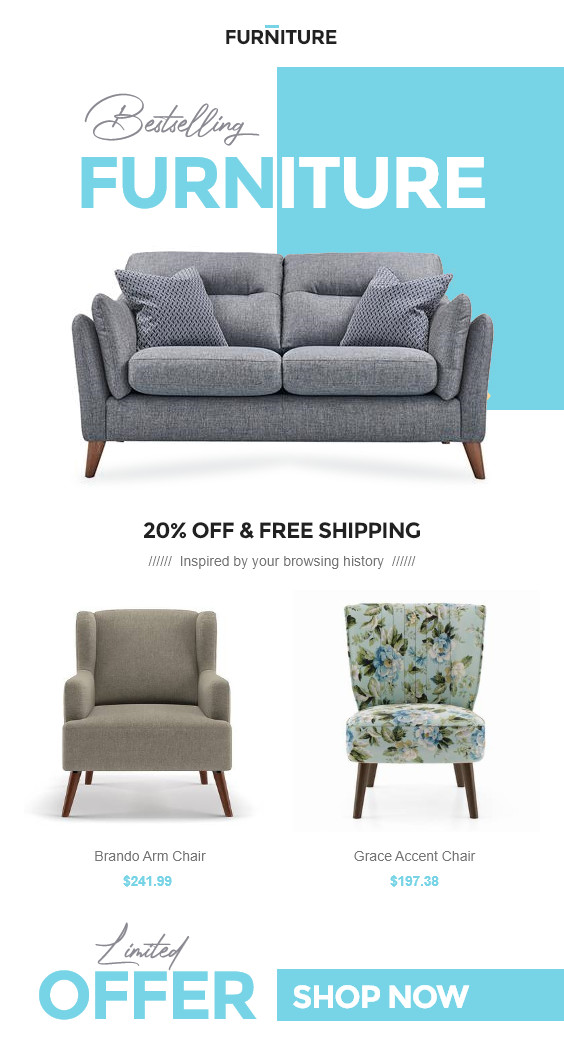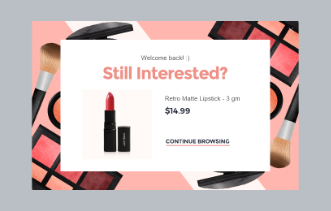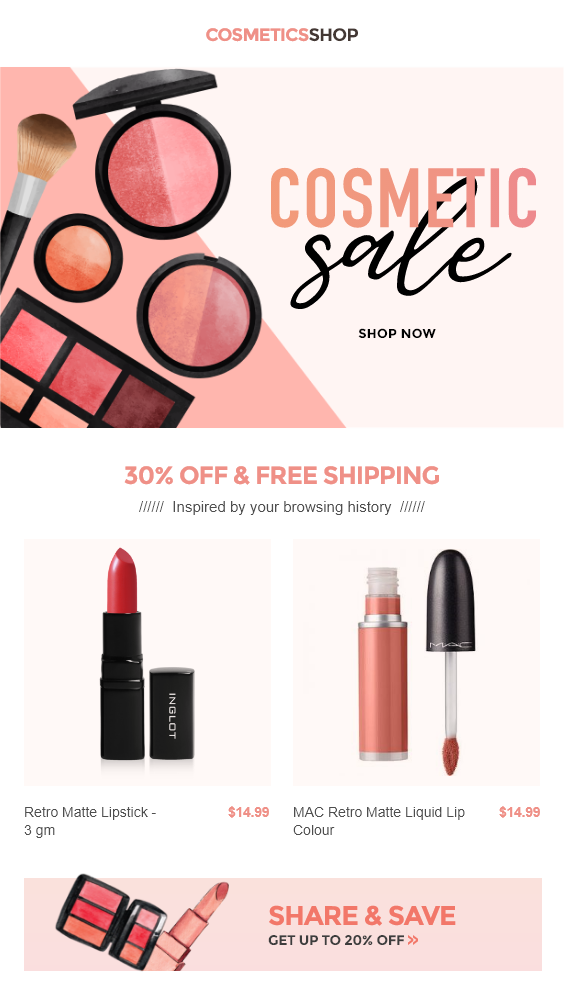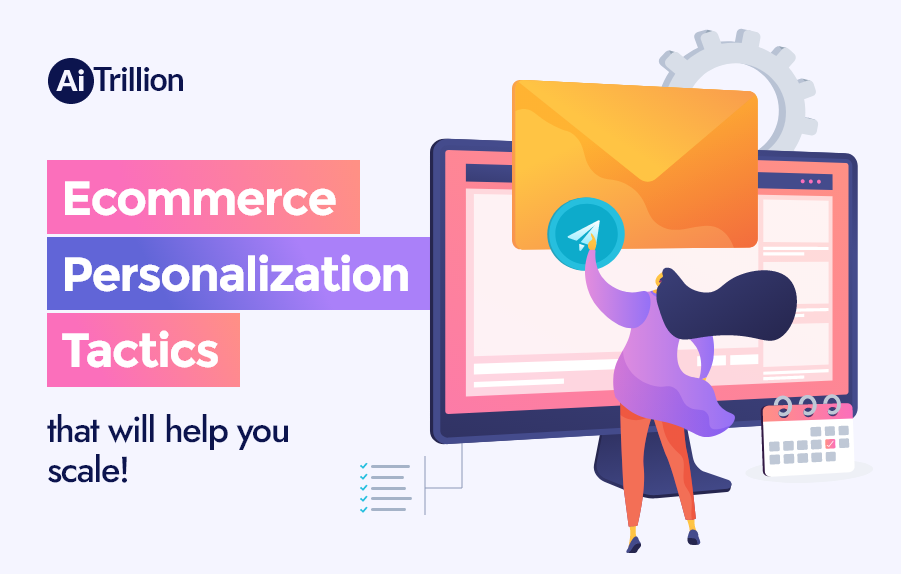Successful brands are the ones who tirelessly work on knowing customer behavior to offer what they are actually looking for. They know to attract the attention of customers, they need to serve them with personalized products and services to keep them coming back.
According to Epsilon and GBH Insights, the vast majority of respondents (80 percent) want personalization from retailers.
Personalization yields nearly 10-15 percent higher conversion rates and 20% higher customer satisfaction rates. This is huge! If done properly eCommerce stores easily achieve this figure, even more.
At AiTrillion as an eCommerce personalization platform, we provide online retailers with the ability to deliver personalized experiences with 11+ integrated eCommerce marketing channels. Here we are slicing down some of the strategies to help you deliver personalized experiences to your customers. Before discussing strategies first let’s discuss eCommerce Personalization.
What is eCommerce Personalization?
Here is the perfect answer to what is eCommerce personalization?
eCommerce personalization describes the strategy that is designed to show offers, product recommendations, and other content to your visitors based on their previous shopping and personal data.
eCommerce Personalization ensures that your offers are relevant offers and product recommendations to your customers. Costumes never get fed up with personalization so there is no limit, just everything that your customer likes and gives what they want. This is a key ingredient of personalization.
According to Janrain, 74% of people hate being shown irrelevant content.
Here is a general guideline on which you can personalize the customer experience.
| Data Segments | What Can Be Personalized? | |
| All-In-One personalization Platforms | Customer Data, Purchase History, Onsite Activity. | Single customer view through an interactive dashboard. |
| Checkout Page | Customer Data, Geo Data, previous buying product. | Location information i.e. default to the country of shoppers’ IP address, One-click checkout |
| Newsletter Subscribers, Cart Abandonments, New Customers, Repeat Purchasers High-Value Customers Non-Purchasers, etc. | Newsletters, Marketing Automation Workflow, Product Recommendations, Sales Offers, Special Discounts. | |
| Onsite Product Recommendations | Last purchased product, Order Price, Purchased Product Category. | Product displays on category pages, Upsells, and cross-sells on Product pages, Cart, and Checkout Page. |
| Onsite Search | Search queries | Search Results, Product Recommendations |
| Personal Data | Name, Gender, Location | Pop-Ups, Product Recommendations, Email, Welcome messages |
| Post Purchase | High-Value customers | Offers, Product Recommendations |
| Pricing | Customer Location, Customer Type, Product price | Dynamic Pricing |
| Push Notifications | Traffic: Geo, Name, Shopping Behavior | Announcements, Offers, Emails, Web Push Notification, and other marketing campaigns. |
| Traffic | Traffic Segments: Geo, Returning Visitor, First Time Visits, Referral Traffic, Device | Currency, Content, Product Display On Category pages, Onsite Popups |
Personalization Tactics For Online eCommerce Store
Here are some tactics that can be used to give your customers a personal experience so that they can feel valued.
1. Personalizing product recommendations
Showcase personalized product recommendations to your shoppers as it helps in setting up their minds to buy the product. Showing shoppers similar or alike products to the ones they’re already interested in increases the chance of purchasing. You can use dynamic up-selling by recommending items that are higher in price but are similar to the item they want to buy or purchased previously.
Cross-selling is also the best option to increase the cart value by personalizing product options. It makes it easy to recommend complementary items and inspires online shoppers to increase their cart value. When you show shoppers items that are related to their purchase or can intensify the use and appearance of the product that they are buying from your store, they are more likely to buy it.
The most compelling product recommendations enable shoppers to jump to associated corresponding categories. For example, when a shopper is viewing a top, they’re also given recommendations of matching footwear and pants.
Browsing history also makes it effortless to return to previously viewed items. It not only improves the shopping experience for your customers but also has been proven to be one of the most thriving ways to increase conversion rate and average order value. Best eCommerce personalization platform allows you to send personalized recommendations just the way your shoppers like.

2. Create personalized bestseller lists
People are attracted to popular products so it’s good to create a bestseller list on the checkout page. Showing the bestsellers with a twist can also help increase its impact. Like you can show the best selling products over the last 24 hours, show the number of people who bought the same product and reviews related to that product.
With category page personalization, many brands saw a nearly 50% click-through rate from the best seller page to product pages.
Here you can definitely use creativity to highlight your bestseller products. eCommerce marketing platforms also help in showcasing the product in various ways. With the help of product widget templates, you can add product recommendations anywhere on the website. You can also use the widget template in email. AiTrillion’s easy-to-use editor allows you to edit a widget to make it your own by changing the background color, text color, slide view, grid view, and language.
Instead of just showing products based on sales, you can also display products based on climate-wise. For example, your customers from Beverly Hills probably aren’t shopping for the same clothing in summer as your shoppers from New York City are. Find what works most suitable for your unique products and shoppers.
Sometimes brands with different genres whose target market is different witnessed the traffic from totally different audiences. By leveraging recommendations specified as Trending Sellers By Location, you can display a completely unique collection of products to their clientele instead of that you sold to worldwide customers.

3. Integrate user-generated content across your products
User-generated content (UGC) can bring traffic to your website. By posting photos, videos, and reviews from customers, visitors get to see your product in real life. By displaying customer reviews on your website or on the product page, you facilitate customers to make peer-based decisions.
88% of customers put as much weight on online reviews as they would on personal recommendations
Fortunately, with AiTrillion’s product review feature, it’s possible to easily integrate all of your marketing campaigns to create seamless, inspiring experiences. These days every brand is using client reviews to build trust, some of them even using face reviews and ratings to increase the authenticity of the products. Unfortunately, this technique will never take you a long way as customers are way more intelligent than you think.
Most businesses also limit the use of UGC by only showing it on product pages or shares on social media. Brands that are giving omnichannel experiences with shopify personalization strategies to their customers use a variety of ways to exhibit user-generated content for a more personalized experience. Some companies make UGC noticeable on their homepage and product page by linking directly to a curated collection of shoppable posts, many of which are submitted by customers through hashtags.
With AiTrillion, brands can display curated shoppable product reviews on social media channels that are submitted by customers.
Instead of showing reviews of particular products, you can also display the overall reviews of the case category of the product; this will help you show an increased number of reviews beneath the product. For example, ai eCommerce personalization allows you to display overall reviews of the same kind of products in one place.
4. Retarget with behavioral trigger popup
Thanks to on-site retargeting, it’s not as expensive as offsite. On-site targeting can be a great alternative to be intuitive with popups. You can trigger popups with personalized offers to match each visitor’s in-session behavior. You can also set an automated workflow to trigger these based on rules like the number of sessions, cart value, and browsing behavior, and others.
Popups are a good way to offer first-time visitors exclusive discounts and perks in exchange for their email addresses. For example, if someone adds items to their cart, you can give tiered discounts to increase the average order value.
Some brands use an interesting alternative to discounts across the board—free shipping with a pricing threshold.
For example, “Free shipping with pricing threshold – 20% on orders over $100.
Another great use of popup is to re-engage returning visitors with reminders of what they’ve browsed on your website but never purchased to encourage them towards the checkout page. Best eCommerce personalization platforms allow you to send on-site retargeting popups to send real-time recommendations.

5. Retargeting with smart recommendations
Don’t be disheartened when your visitor leaves your site without any purchase. Still, there are various ways to get their attention back through retargeting with product recommendations. To make this approach successful, you need to choose the retargeting time wisely.
One of the advanced ways of retargeting is when visitors search you on social media or revisit your site. Show them a popup with the item they browse precisely with some appealing discounts. If visitors have shared their email address with you then you can also send them an email with a personalized discount and the product image.
If the visitor is no longer engaging with your brand, you can decrease the number of emails and pop-ups that you are sending them to engage.
It’s also essential to be mindful of how you’re addressing these shoppers: whether it’s with products that are relevant to their previous purchases or simply by reminding them of your bestseller in an engaging way.
By using top eCommerce personalization platforms like AiTrillion, you can re-target shoppers at just the right time without irritating them.

6. Automate personalized email
If an online shopper shares their email address with your brand, you can directly engage and convert them. With automated workflow, you can reach out to your customers no matter which platform they are using, this helps keep your company at top of your mind.
With an on-site eCommerce personalization platform, you can automate abandoned cart email series containing items they left in their cart to encourage customers to come back and finish the purchase.
If a shopper forgets about their cart, you can nudge them with a variety of emails. Many brands send emails to re-engage visitors and announce new, exciting, products to remind the visitor of what they’d searched for in the past.
Follow-up email series is another best way to start engagement with a buyer. Check-in with buyers after purchase and provide customized product recommendations based on their previous orders makes them feel valued and they are more likely to buy from you again.
Final thoughts
Hyper-Personalization sets your brand apart from others and helps in creating a strong bond with your customers. AiTrillion helps Shopify store owners to build experiences that strengthen customer engagement resulting in a sustainable, flourishing future for your business.



Leave a Comment
You must be logged in to post a comment.